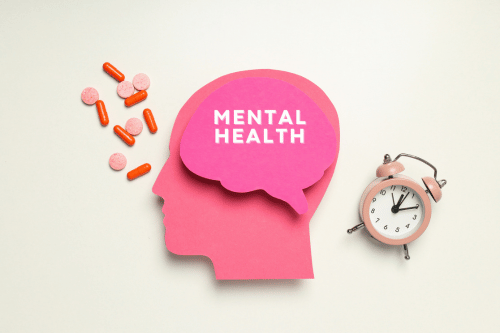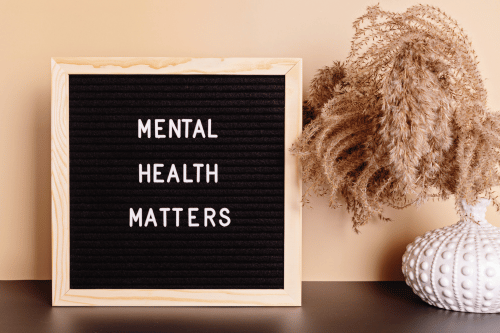

Understanding what is the difference between comorbidity and dual diagnosis is important for patients, families, and professionals in addiction and mental health care. These terms are often used in psychiatry, but they describe different clinical realities. Both conditions highlight how a mental disorder and substance abuse can interact, creating risks that affect health, behavior, and overall quality of life.
Comorbidity refers to the presence of two or more medical or psychiatric conditions in the same individual. A person may live with major depressive disorder and anxiety disorder, or with opioid addiction and chronic physical disease. Each condition has its own prognosis, but together they increase the complexity of treatment.
In mental health, comorbidity often links disorders like bipolar disorder, panic disorder, or schizophrenia with substance abuse. Patients may experience greater stress, impaired cognition, and higher relapse risks. Treatment requires careful therapy, effective medication, and consistent follow-up care.

Dual diagnosis specifically refers to a mental disorder occurring alongside a substance use disorder. For example, alcohol addiction combined with anxiety or borderline personality disorder qualifies as dual diagnosis. Unlike comorbidity in general, dual diagnosis focuses on the intersection of addiction and psychiatric conditions.
This distinction matters because addiction changes the brain, especially its reward system and neurotransmitter activity. Drug and prescription drug addiction create cycles of impulsivity, poor coping, and higher relapse rates. Dual diagnosis patients often need integrated care involving nursing, dialectical behavior therapy, and psychiatry.
The main difference lies in scope. Comorbidity covers any combination of conditions, such as attention deficit hyperactivity disorder with diabetes, or a personality disorder paired with cardiovascular disease. Dual diagnosis is narrower, requiring a pairing of substance abuse and a mental disorder like mood disorder, psychosis, or major depressive disorder.
This difference influences treatment planning and long-term prognosis. In dual diagnosis, providers integrate addiction treatment with mental health care, focusing on both sobriety and psychiatric stability. Comorbidity may not always involve drug or alcohol use, but it still increases medical complexity, risk factors, and challenges for maintaining quality of life.
Patients may face multiple conditions such as anxiety disorder, bipolar disorder, or major depressive disorder. Others experience schizophrenia, panic disorder, or borderline personality disorder alongside substance misuse. These combinations often increase impulsivity, poor coping, and higher relapse risks.
Genetics, chronic stress, and environmental risk factors like trauma or early exposure to alcohol or opioid use raise the likelihood of comorbidity. In dual diagnosis, common links include prescription drug addiction with anxiety, or alcohol abuse with depression. Each case impacts behavior, cognition, and the ability to sustain healthy relationships and daily functioning.

Psychiatry helps identify how addiction and mental disorders overlap and affect the brain. Professionals evaluate cognition, mood disorder symptoms, and the influence of neurotransmitter imbalances that drive cravings and poor coping. They also manage medication that reduces relapse risks, stabilizes mood, and restores balance in the reward system.
Psychiatrists work with therapy teams, combining dialectical behavior therapy, relapse prevention, and behavioral approaches for better outcomes. For patients with dual diagnosis, integrated psychiatry reduces the risk of untreated symptoms fueling further substance abuse. This collaboration between psychiatry and therapy helps improve quality of life, lower relapse, and support long-term sobriety.
Therapy is central for both comorbidity and dual diagnosis. Patients learn coping strategies that lower stress, reduce impulsivity, and improve emotional regulation. For those with borderline personality disorder, dialectical behavior therapy is highly effective in teaching new skills and managing emotional instability.
Therapists also address how addiction interacts with mental disorder symptoms, using family counseling, group sessions, and individual support. These approaches strengthen cognition, rebuild relationships, and encourage healthier behavior. Effective therapy empowers patients to maintain sobriety, avoid relapse, and improve long-term health and functioning.

Nursing professionals provide crucial care during detox, stabilization, and monitoring of both psychiatric and medical conditions. They observe changes in cognition, track medication side effects, and intervene when withdrawal from opioids, alcohol, or prescription drug addiction becomes dangerous. They also identify early signs of psychosis or relapse risk.
In comorbidity cases, nurses coordinate with doctors to address both physical disease and mental health concerns simultaneously. In dual diagnosis, nursing care plays a key role in managing impulsivity, cravings, and psychiatric symptoms tied to substance abuse. Their ongoing support helps improve prognosis, strengthen coping skills, and ensure patients remain stable in recovery.
Addiction changes the brain through repeated exposure to drug use. This affects the reward system, leading to cravings and compulsive behavior. Neurotransmitter disruption increases impulsivity, worsens mood disorder symptoms, and raises relapse risks.
Genetics, chronic stress, and environmental risk factors also influence comorbidity and dual diagnosis. Patients with family histories of mental disorder, alcohol abuse, or prescription drug addiction face higher risks. Effective treatment considers these biological and environmental elements.
Developing strong coping strategies is key to recovery. Patients learn to manage stress, avoid high-risk triggers, and build social support. Therapy helps individuals recognize relapse warning signs tied to impulsivity or psychiatric symptoms.
Relapse does not mean failure but signals the need for treatment adjustments. With integrated care, patients can return to sobriety, rebuild quality of life, and reduce long-term risks tied to comorbidity and dual diagnosis.

Accessing dual diagnosis or comorbidity treatment often depends on insurance, which can make the difference between early care and untreated conditions. Many plans now include benefits for mental health, substance abuse, and addiction treatment, covering services such as therapy, psychiatry, and medication. Patients struggling with alcohol, opioid, or prescription drug addiction may also receive support for detox programs and structured outpatient services.
Insurance improves access to cognition assessments, relapse prevention, and evidence-based interventions like dialectical behavior therapy. These services help address both disease and psychiatric needs while reducing long-term relapse risk. For patients facing comorbidity or dual diagnosis, coverage ensures continuity of care, coordinated treatment, and improved prognosis.
The prognosis for comorbidity and dual diagnosis improves with early detection, integrated treatment, and consistent follow-up. Patients who receive care that addresses both mental disorder symptoms and addiction can achieve stronger stability, longer sobriety, and better emotional regulation. Programs that combine nursing, medication, and therapy increase the likelihood of lasting recovery and enhanced quality of life.
Without treatment, patients face a higher chance of relapse, worsening psychosis, and declining physical and emotional health. Unmanaged anxiety, bipolar disorder, or borderline personality disorder paired with substance abuse can amplify stress, impulsivity, and destructive behavior. Effective programs target both conditions together, improving coping skills, reducing risk factors, and restoring daily functioning.
So, what is the difference between comorbidity and dual diagnosis? Comorbidity includes any combination of medical or psychiatric conditions, such as anxiety disorder with diabetes, while dual diagnosis specifically refers to a mental disorder paired with substance abuse. Both require integrated treatment approaches that combine psychiatry, therapy, and addiction care to manage symptoms, reduce relapse, and improve health outcomes.
At Sullivan Recovery, our outpatient programs bring together therapy, medical support, and psychiatric care for patients dealing with alcohol, opioids, or drug misuse alongside mental health challenges like mood disorder, schizophrenia, or major depressive disorder. By addressing both conditions at once, patients build effective coping skills, improve cognition, and work toward lasting sobriety. This integrated approach restores stability, reduces long-term stress, and supports a healthier quality of life.
At Sullivan Recovery, as an in-network provider we work with most insurance plans, such as:
And More
If you or a loved one are struggling with mental health challenges or substance abuse, reach out to Sullivan Recovery today. Our team of compassionate professionals is here to support your journey towards lasting well-being. Give us a call at 949-836-7180.
Yes. Comorbidity may involve two medical conditions or two mental health disorders without any substance abuse present. Dual diagnosis specifically requires both a substance use disorder and a mental disorder together.
Dual diagnosis is harder to treat because addiction directly affects the brain’s reward system, increasing relapse risks. Treating only the mental disorder or the addiction without addressing both can lead to poor outcomes.
Most insurance plans cover treatment for mental health and substance use under behavioral health benefits. Coverage may include psychiatry, medication, therapy, and relapse prevention for both comorbidity and dual diagnosis cases.
Chronic stress can worsen both mental disorders and addiction. Stress affects neurotransmitters, increases impulsivity, and can make coping difficult, raising the risk of relapse and worsening overall health.